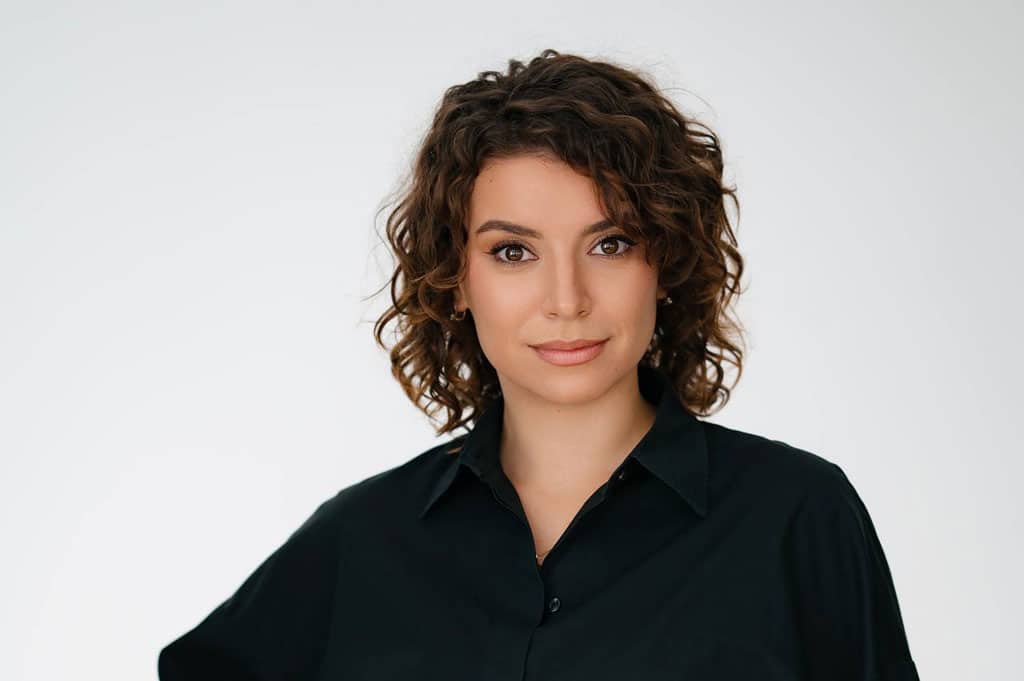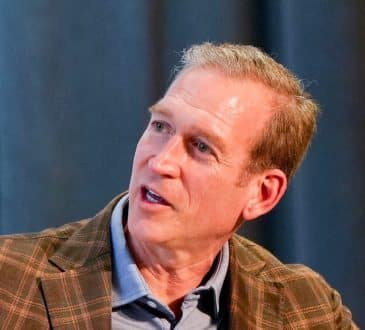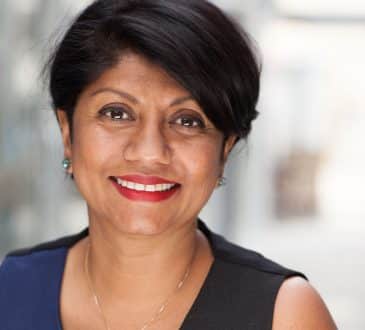Managing Scientific Projects in Healthcare: leadership approach

In an era of rapid technological advancement, neurotechnology is emerging as one of the most promising fields in modern medicine. This cutting-edge domain, situated at the intersection of neurobiology, engineering, and information technology, offers unprecedented possibilities for diagnosing, treating, and rehabilitating patients with neurological disorders. Yet, the path from laboratory research to transformative, life-changing products is fraught with challenges. Success demands not only deep scientific expertise but also exceptional leadership skills.
One of the field’s foremost experts, Aleksandra Karpman, has spent over a decade working on brain-computer interfaces (BCIs). Having started her career as a neurophysiologist, Aleksandra quickly rose to leadership positions within pioneering biomedtech startups. Between 2019 and 2022, she worked at NEIRY, advancing from product manager to head of scientific projects, where she led the development of a groundbreaking API for brain activity analysis. Since 2023, Aleksandra has been leading product development at SUBSENSE, where she oversees the creation of the world’s first non-surgical bidirectional Nanoparticle-based BCI utilizing nanoparticles.
“In neurotechnology, every discovery has the potential to change lives,” Aleksandra observes. “But success isn’t solely found in scientific laboratories. The real challenge lies in managing innovative projects, transforming scientific ideas into products ready for clinical application.”
Key Principles for Managing Scientific Projects in Neurotechnology
Drawing on her extensive experience, Aleksandra Karpman has distilled several key leadership principles critical to the success of neurotechnology projects.
- Balancing Scientific Precision and Commercial Viability: “In neurotechnology, we constantly walk a fine line between scientific excellence and the need for commercially viable products,” Aleksandra explains. This principle was exemplified during her work on the brain activity analysis API, which provided real-time access to more than 25 brain activity indicators and metrics. “We developed a product that met rigorous scientific standards but also had practical applications across sectors, from healthcare to industrial safety,” she notes.
- Interdisciplinary Approach: Aleksandra highlights the importance of bringing together experts from a wide array of disciplines. In her projects, she actively formed interdisciplinary teams that included neurobiologists, engineers, machine learning specialists, and clinicians. “Our work on the bidirectional brain-computer interface, built on nanoparticles, shows how collaboration across different domains can lead to breakthroughs,” she says. “Each expert contributed a unique perspective—neurobiologists knew how to interact with neurons, nanomaterials specialists developed the particles, engineers addressed signal transmission, and machine learning experts devised the data interpretation algorithms.”
- User-Centric Focus: “No matter how advanced the technology, it’s worthless if it doesn’t solve real patient problems,” Aleksandra asserts. To ensure relevance, she recommends implementing a practice of regular meetings with patients and healthcare professionals throughout all stages of development. This focus on the end-user ensured that their products were not only technologically sophisticated but also intuitive and practical for those who would ultimately benefit from them.
- Risk Management and Regulatory Compliance: Aleksandra’s projects were built on a foundation of comprehensive risk management strategies tailored to the unique challenges of neurotechnology. “In our field, mistakes can have serious consequences, so safety and regulatory compliance are paramount,” she explains. Her teams collaborated closely with regulatory bodies from the earliest stages of development to ensure that safety and compliance were always top priorities.
- Effective Fundraising: Aleksandra’s impressive track record in securing funding includes raising approximately $11 million across multiple ventures. “The key to successful fundraising is articulating not only the scientific value of a project but also its commercial potential,” she reveals. She developed a robust presentation strategy that clearly demonstrated both the innovative aspects of the science and the market viability of the products.
- Flexibility and Adaptability: “In the fast-paced world of neurotechnology, the ability to adapt swiftly to new discoveries and market shifts isn’t just an asset—it’s a necessity,” Aleksandra says. She implemented agile project management methodologies specifically adapted for scientific research, which enabled her teams to respond promptly to emerging data and changes in the technological landscape.
Building and Leading Scientific Teams
“In neurotechnology, it’s not enough to assemble a team of brilliant scientists. You need to foster an environment where specialists from different disciplines can collaborate seamlessly and communicate effectively,” Aleksandra stresses.
We’ve already touched on the interdisciplinary approach in developing the non-surgical bidirectional NP-based BCI. To facilitate effective collaboration, Aleksandra implemented regular cross-functional meetings. “We developed a ‘project dictionary’ to ensure that team members from different specialties could understand each other’s terminology. This significantly accelerated our development process,” she notes.
One of Aleksandra’s notable achievements was establishing a Scientific Advisory Board comprising esteemed scientists from leading institutions in the U.S. and Europe. “This board kept us informed about the latest scientific breakthroughs,” she explains. It played a pivotal role in validating the concept of using nanoparticles for stimulation and recording neural activity.
In her work on physiological signal analysis systems—including EEG, EMG, GSR, and PPG—Aleksandra organized workshops where scientists and business analysts collaborated to develop real-world application scenarios. “This ensured our developments pushed scientific boundaries while also having a clear path toward commercialization,” she explains.
Aleksandra has also been instrumental in fostering young talent. She initiated an internship program where students worked on real-world projects under the guidance of experienced scientists. “This program allowed us to discover new talent and bring fresh ideas into the team,” she adds.
Driving International Collaboration
Success in neurotechnology hinges on combining expertise and resources from across the globe. Recognizing this, Aleksandra made international collaboration a cornerstone of her strategy.
Aleksandra began by forging local partnerships but quickly expanded her network globally. “Neurotechnology transcends borders. To remain at the cutting edge, we need to collaborate with the brightest minds worldwide,” she says.
Her efforts have led to partnerships with leading institutions, including ETH Zurich and UCSC. These collaborations began with joint research into brain tissues and nanoparticle interactions. “Working with ETH Zurich enables us to get deeper in understanding how nanoparticles can influence brain activity,” she recalls. Her collaboration with UCSC opened new avenues for detecting changes in neural activity by using nanotechnology.
Aleksandra also forged strong connections with prominent figures in neurotechnology, nanomedicine, nanorobotics, neuroethics.. Through these collaborations, SUBSENSE continually refines its medical approach, leveraging cutting-edge insights to ensure that their technology aligns with the specific needs of patients. This partnership helps enhance the precision and effectiveness of their brain-computer interfaces, ensuring that they remain at the forefront of neuroscience innovation.
International conferences have also played a critical role in advancing Aleksandra’s work. Aleksandra and her team actively participate in various industry conferences, including those focused on Brain-Computer Interface, nanomedicine, medical devices and other. These interactions led to several partnership offers, showcasing the growing interest in the innovations being developed by SUBSENSE and further solidifying its position in the neurotechnology field.
Leadership Amidst Uncertainty
In the rapidly evolving field of neurotechnology, leadership requires a unique approach. “The ability to adapt quickly to new data and shifting conditions is a critical leadership trait,” Aleksandra notes.
Her leadership during the development of the non-surgical bidirectional BCI based on nanoparticles is a prime example. “Many considered the project too futuristic when we first started,” she recalls. “But we developed a strategy that allows us to advance incrementally, validating our ideas at each step.”
Aleksandra created a system of regular project reviews, where progress is evaluated, and plans are adjusted based on the latest scientific and experimental data. “We built a culture where failure isn’t a setback—it’s a learning opportunity,” she says.
Additionally, Aleksandra emphasizes the importance of bridging the gap between scientific research and commercial application. She developed “application roadmaps” that linked scientific achievement to a potential commercial use case. “This approach not only helped us attract investments but also kept our research focused on the most promising avenues,” she explains.
Aleksandra’s leadership isn’t confined to strategy and innovation. She also ensures her projects adhere to the highest ethical standards. “When developing technologies that interact directly with the brain, we bear an enormous responsibility,” she stresses. To that end, she collaborates with experts in neuroethics and regulatory compliance, integrating these considerations from the earliest stages of development.
“Leadership in times of uncertainty is about creating an environment where every team member feels empowered to contribute,” Aleksandra concludes.
Her leadership approach has not only facilitated the successful implementation of complex neurotechnology projects but has also fostered a culture of innovation where uncertainty is seen not as a barrier, but as an opportunity for breakthroughs.
Our exploration of the neurotechnology world alongside Aleksandra Karpman illustrates how fine the line is between science fiction and reality. We now stand on the cusp of an era where understanding the human brain and interacting with it opens up previously unimaginable possibilities.
Aleksandra’s leadership exemplifies that a true leader in neurotechnology is not just a scientist or a manager but a visionary, capable of discerning future potential in raw data. Her accomplishments speak for themselves.
As we enter this new era of neurotechnology, we must remember that each scientific discovery brings with it immense opportunities, but also great responsibility. It is leaders like Aleksandra who are shaping whether we will harness these opportunities wisely and ethically for the benefit of humanity. Her work not only brings the future closer but also inspires a new generation of researchers and entrepreneurs to chase bold ideas and turn them into reality.
Have you read?
Best Fashion Schools In The World.
Best Medical Schools In The World.
Best Business Schools In The World.
World’s Best International High Schools.
Best Hospitality And Hotel Management Schools In The World.
Bring the best of the CEOWORLD magazine's global journalism to audiences in the United States and around the world. - Add CEOWORLD magazine to your Google News feed.
Follow CEOWORLD magazine headlines on: Google News, LinkedIn, Twitter, and Facebook.
Copyright 2025 The CEOWORLD magazine. All rights reserved. This material (and any extract from it) must not be copied, redistributed or placed on any website, without CEOWORLD magazine' prior written consent. For media queries, please contact: info@ceoworld.biz








